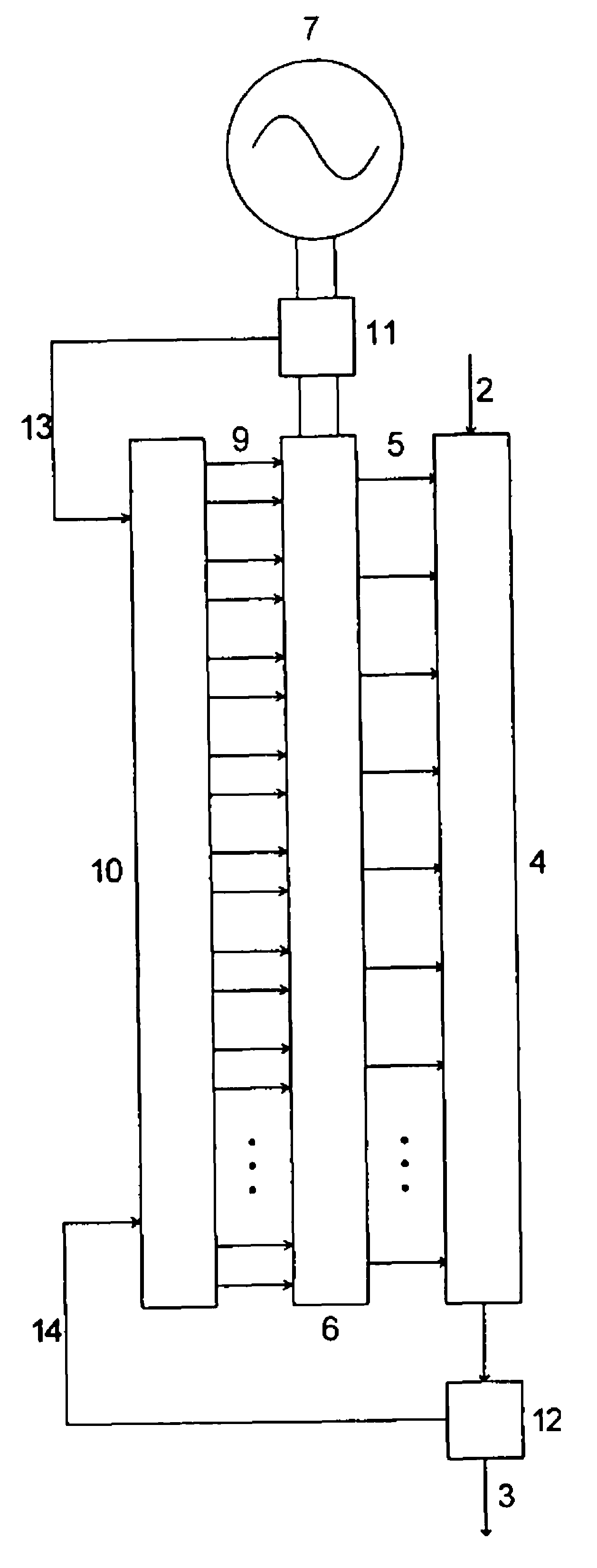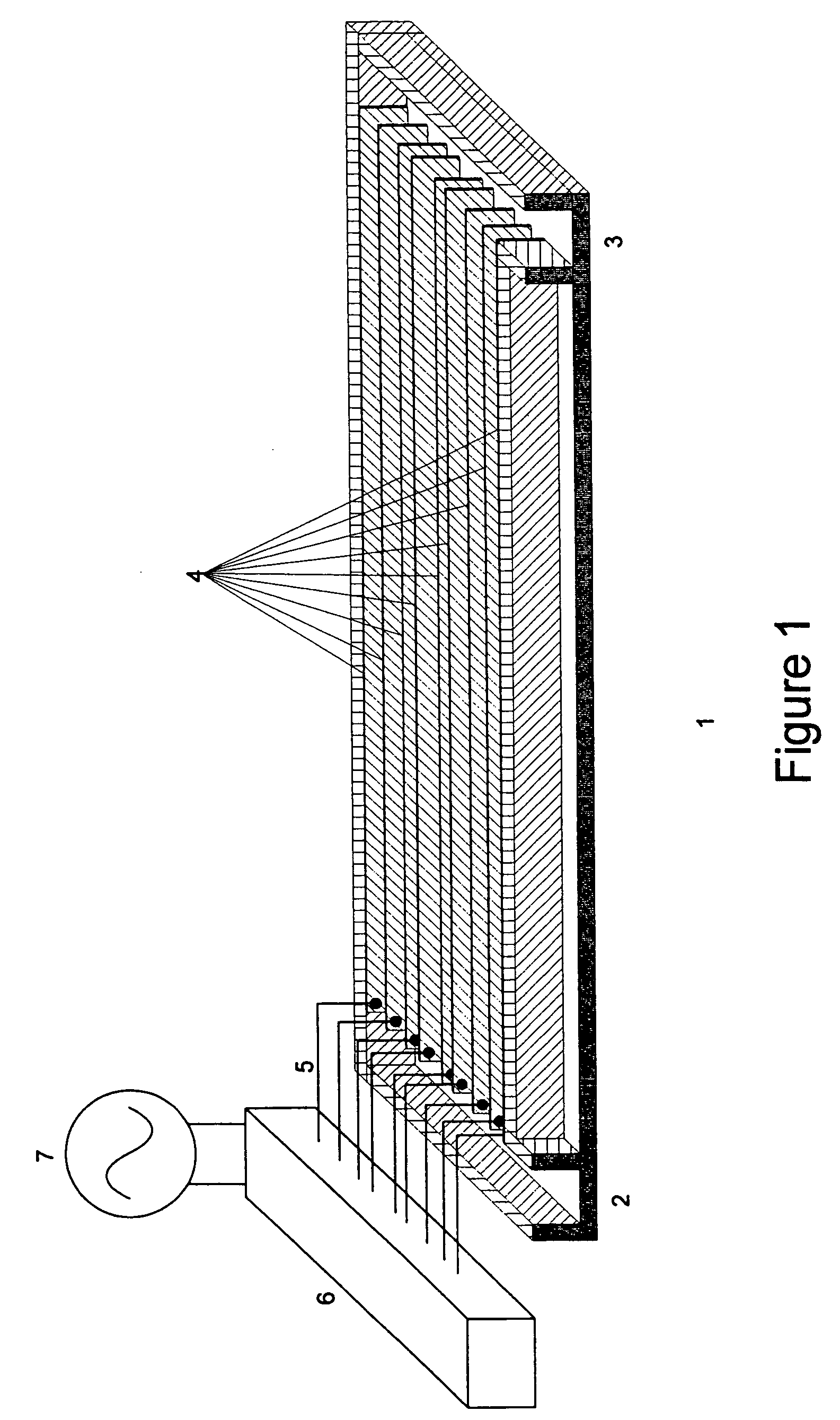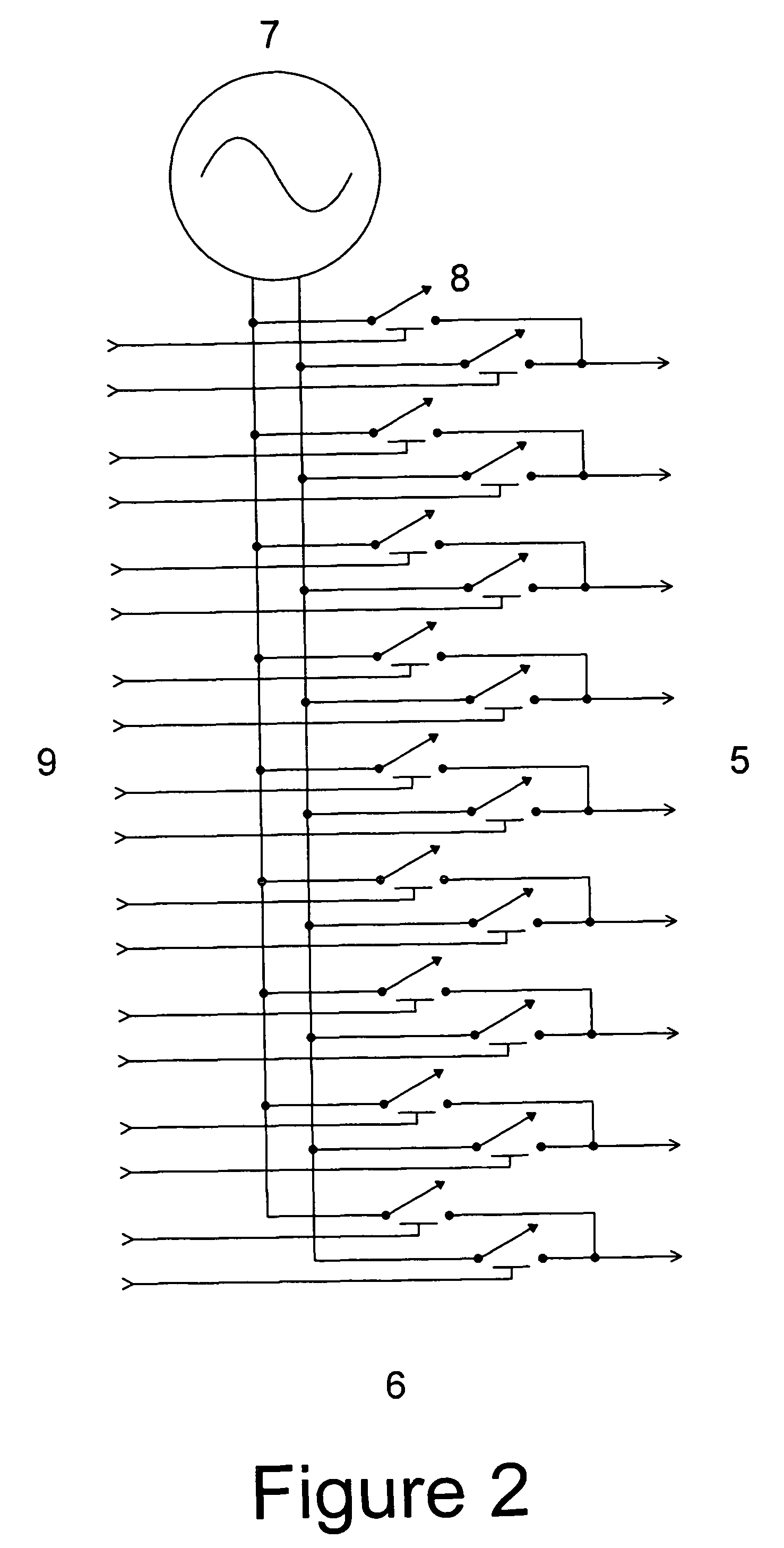Direct electric resistance liquid heater
a liquid heater and direct electric technology, applied in the direction of fluid heaters, water heaters, lighting and heating apparatus, etc., can solve the problems of shortened life, element failure, system meltdown, etc., and achieve the effect of virtually eliminating corrosion problems
- Summary
- Abstract
- Description
- Claims
- Application Information
AI Technical Summary
Benefits of technology
Problems solved by technology
Method used
Image
Examples
Embodiment Construction
[0035]FIG. 1 shows essential elements of the present invention. A liquid heating chamber 1 is shown comprising a liquid inlet 2, a plurality of electrodes 4 (the electrode array), the electrodes defining a plurality of channels, the spaces between the electrodes, through each of which liquid flows from the liquid inlet 2 to the liquid outlet 3, the liquid being heated when it flows through the channels and a voltage is applied between electrodes. For clarity, the liquid heating chamber is shown with a bottom but without a top so that the electrodes and the channels defined by them can more clearly be seen. The electrodes 4 are shown in FIG. 1 as having a non-uniform or unequal spacing, which will be explained later. The electrodes 4 are connected via connections 5 to switch matrix 6 via which AC electrical power 7 is communicated to the electrodes. The electrodes 4 are thin relative to the width of the channels. The electrodes 4 are preferably thinner than the width of the narrowest...
PUM
 Login to View More
Login to View More Abstract
Description
Claims
Application Information
 Login to View More
Login to View More - R&D
- Intellectual Property
- Life Sciences
- Materials
- Tech Scout
- Unparalleled Data Quality
- Higher Quality Content
- 60% Fewer Hallucinations
Browse by: Latest US Patents, China's latest patents, Technical Efficacy Thesaurus, Application Domain, Technology Topic, Popular Technical Reports.
© 2025 PatSnap. All rights reserved.Legal|Privacy policy|Modern Slavery Act Transparency Statement|Sitemap|About US| Contact US: help@patsnap.com



